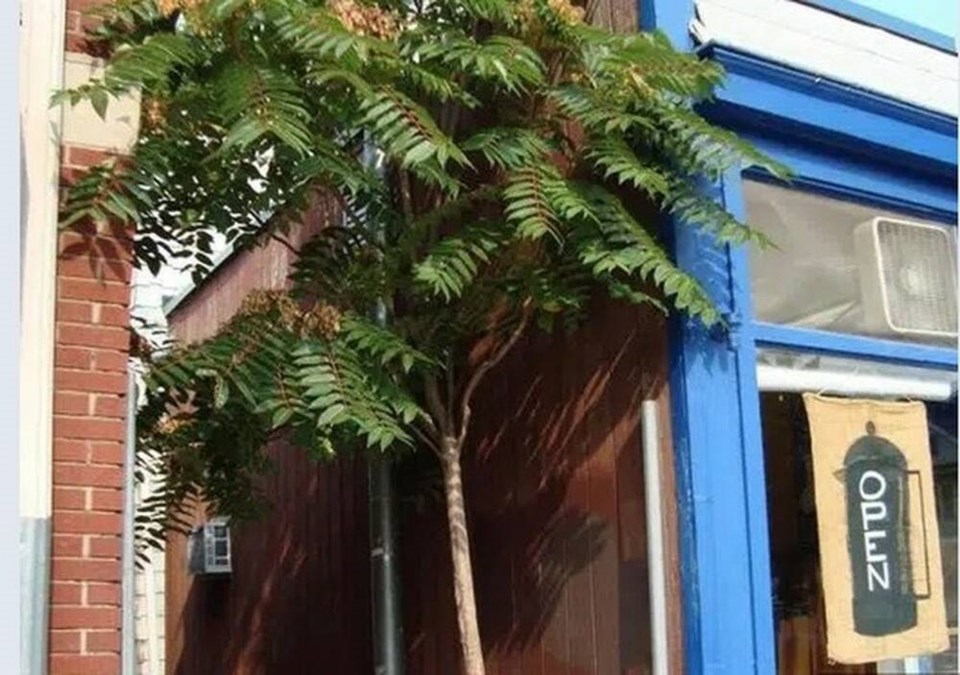A noxious and invasive plant known as the tree of heaven could present hellish problems for Okanagan agriculture if its growth is left unchecked, officials say.
The fast-spreading plant is the preferred breeding ground for a type of insect called the spotted lanternfly that could cause significant damage to crops.
“The tree of heaven gives refuge to this notorious insect,” reads part of a report to be presented Thursday to directors of the Kelowna-based Central Okanagan Regional District.
“These extremely hazardous pests cause widespread damage by feeding on plant sap and travelling between host plants such as grapes, apple, and other stone fruits,” the report says. “This would lead to significant impacts to B.C.’s grape, fruit tree, and forest industries.”
Directors will be asked to add the tree of heaven (Ailanthus altissima) to a long list of plants considered a nuisance. With such a designation, landowners can be ordered to remove the plant from their property or be fined.
The tree of heaven looks like a sumac plant but is native to China. It was brought to North America in the 1800s for gardening purposes, and has established itself in many locations.
“The tree grows quickly (capable of reaching heights of 15 metres in 25 years), develops many suckers, and emits a foul-smelling odour,” says the Invasive Species Council of B.C.
“It can rapidly colonize disturbed areas and suppress plant competition with allelopathic chemicals. When cut, the tree re-spouts vigorously, thus making eradication very difficult, costly and time consuming,” the council says on its website.
The most effective control method is to cut the tree of heaven down in the fall and poison the root system, the council says.
Spotted lanternflys have not yet been detected in B.C. but they have been found in 11 U.S. states, two of which border Canada. It’s listed as a pest under the federal Plant Protection Act.
By designating the tree of heaven as an invasive plant, homeowners can cut it down without getting the paperwork that would otherwise be required under various tree-related bylaws. Also proposed to be added to this list are Siberian elm trees and Russian olive trees.
ABOUT TREE OF HEAVEN
Here’s what the Invasive Species Council of B.C. has to say about tree of heaven:
Tree of heaven (Ailanthus, Varnish tree) is a deciduous tree that became popular in B.C. with gardeners for its rapid growth and interesting foliage. It is native to China and Taiwan.
It produces by seed and by division and can sprout nearly anywhere — it is tolerant to a wide range of environmental conditions.
It is described as foul-smelling and now considered a weedy, invasive species that crowds out other plants.
HOW TO IDENTIFY TREE OF HEAVEN
Tree of heaven can reach between 20 and 30 metres in height with a spread of 10 to 15 metres at maturity. Bark is grey and lightly textured.
Flowers are small and white. Fruit is a showy red samara (like a maple’s “helicopter” like winged seeds).
Leaves grow to 50 centimetres and are divided into oval-shaped leaflets. In the fall, the foliage turns yellow.
Source: Invasive Species Council of B.C.



